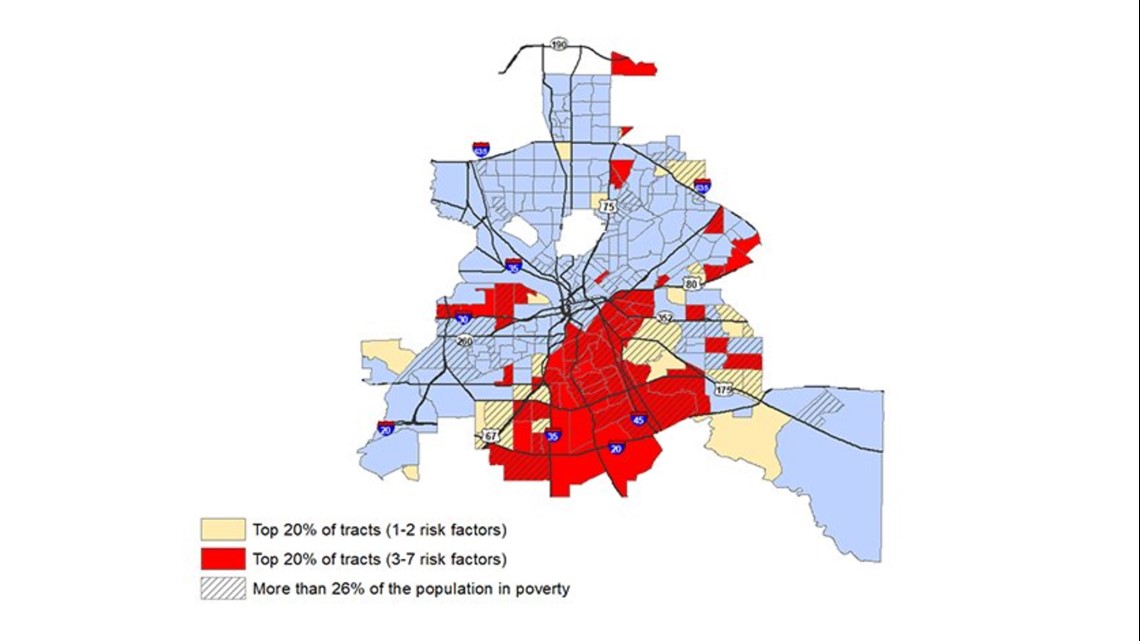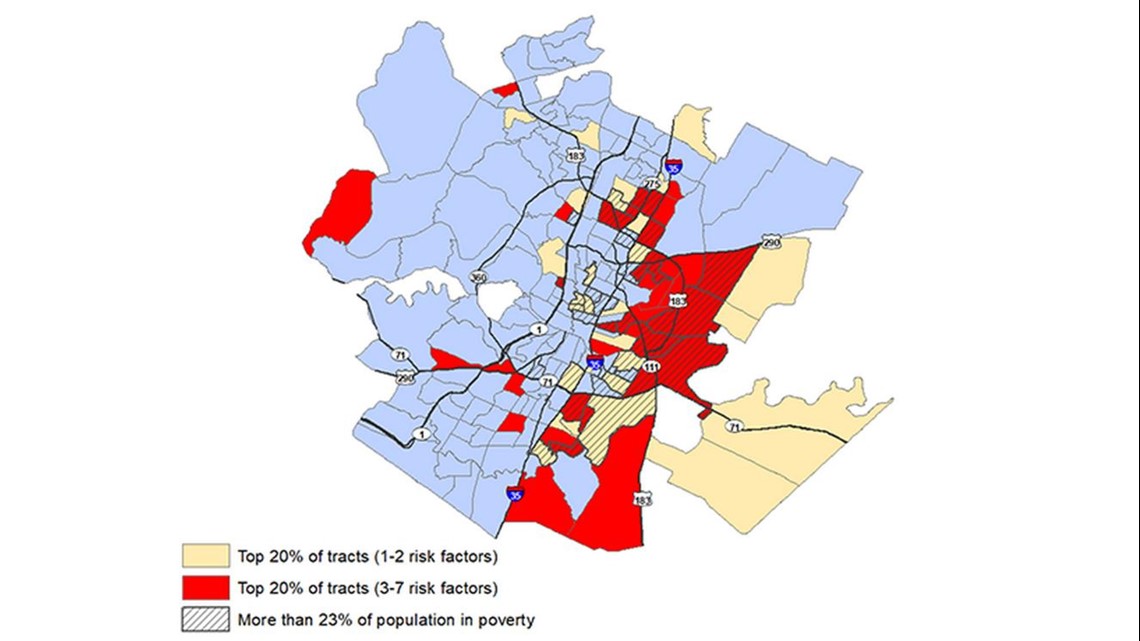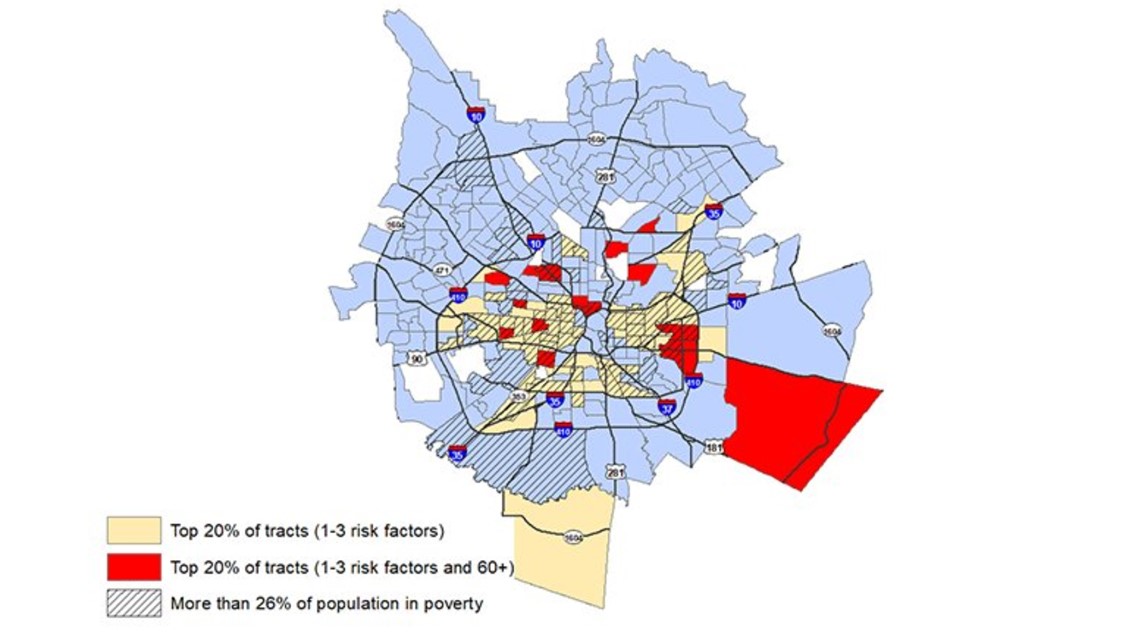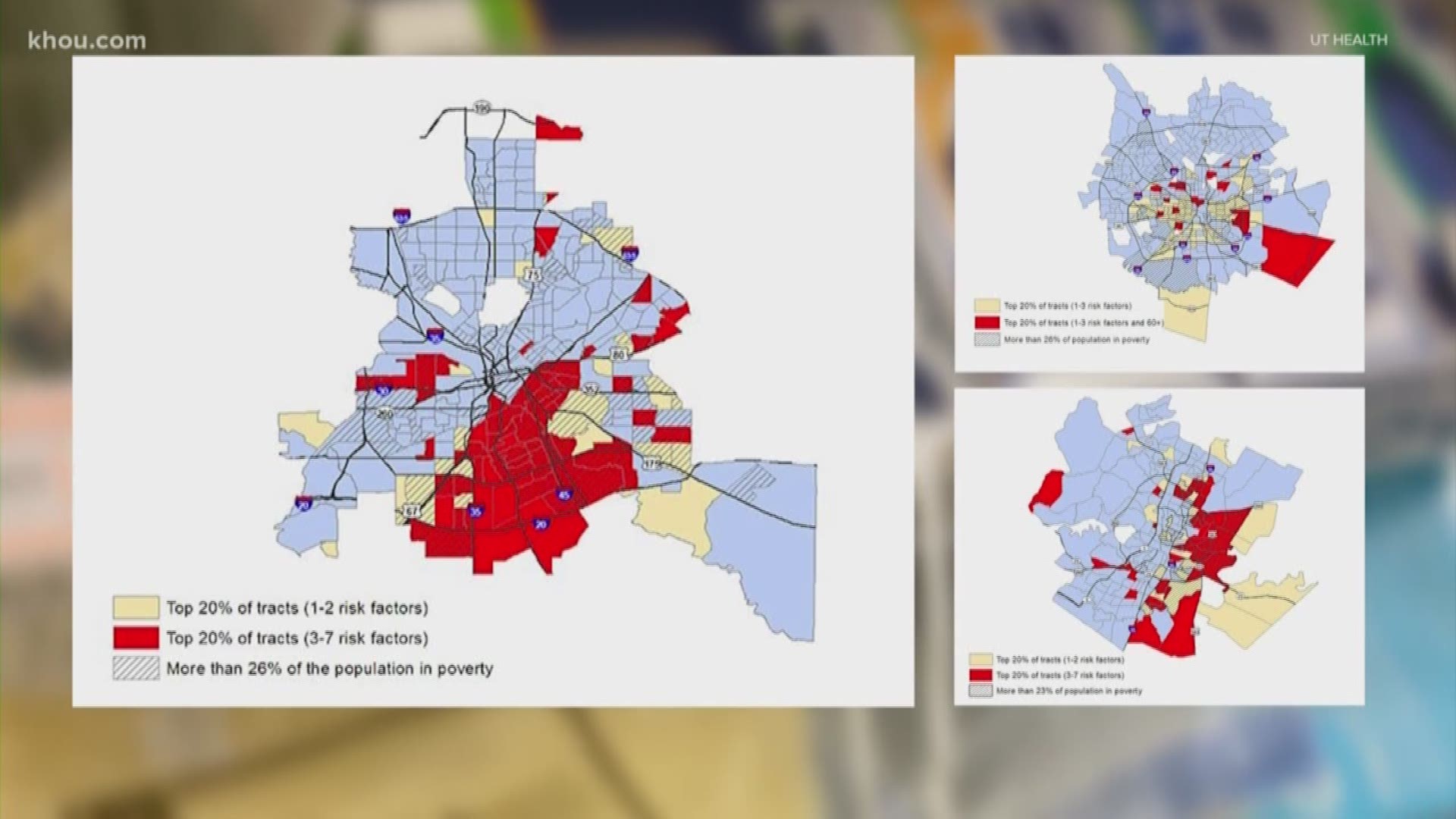HOUSTON — Researchers have mapped out areas of the big Texas cities where residents will most likely need high levels of care for COVID-19, such as hospitalization or ICU care.
Authors of the study at the UTHealth School of Public Health examined census and the Centers for Disease Control and Prevention data for Dallas, Austin and San Antonio. They looked at populations of a certain age, and those who have chronic diseases, including heart, lung disease and diabetes.
The data was for 2017 and provided researchers “a good cross section of what the picture of chronic disease was in these different urban areas,” said Dr. Stephen Linder, professor and director of the Institute of Health Policy at UTHealth School of Public Health in Houston.
“Governor (Greg) Abbott had spoken about surge capacity and our ability to deal with the stress on the healthcare system as cases increased,” Linder said. “We thought if we looked at the patterns of chronic disease in different cities, we could at least provide some data for those plans to be made. And also suggest areas where local nonprofits and hospitals could do outreach to people who have these risk factors, who have these underlying medical conditions that appeared to lead to severe infections that they require hospitalization.”
Linder said researchers believe providing a map of data might be the easier way to present information to help people plan.
“It’s better to have some data to inform the choices that are necessary for the allocation of resources, then just to leave it to either comparisons with earlier outbreaks or patterns that have nothing to do with COVID-19,” he said.
In addition to age and chronic medical conditions, in some communities, poverty played a role in why someone could be more vulnerable to COVID-19 and might need a more serious level of care.
Linder said researchers already looked at Houston. Next they’re starting to starting to analyze top 20 cities in Texas based on their population. They will be able to look at the number of people who have risk factors and match them against the available beds and ICU units in particular counties.






Coronavirus symptoms
The symptoms of coronavirus can be similar to the flu or a bad cold. Symptoms include a fever, cough and shortness of breath, according to the Centers for Disease Control. Some patients also have nausea, body aches, headaches and stomach issues. Losing your sense of taste and/or smell can also be an early warning sign.
Most healthy people will have mild symptoms. A study of more than 72,000 patients by the Centers for Disease Control in China showed 80 percent of the cases there were mild.
But infections can cause pneumonia, severe acute respiratory syndrome, kidney failure and even death, according to the World Health Organization. Older people with underlying health conditions are most at risk for becoming seriously ill. However, U.S. experts are seeing a significant number of younger people being hospitalized, including some in ICU.
The CDC believes symptoms may appear anywhere from two to 14 days after being exposed.
Human coronaviruses are usually spread through...
- The air by coughing or sneezing
- Close personal contact, such as touching or shaking hands
- Touching an object or surface with the virus on it, then touching your mouth, nose or eyes before washing your hands.
Help stop the spread of coronavirus
- Stay home when you are sick.
- Eat and sleep separately from your family members
- Use different utensils and dishes
- Cover your cough or sneeze with your arm, not your hand.
- If you use a tissue, throw it in the trash.
- Follow social distancing
Lower your risk
- Wash your hands often with soap and water for at least 20 seconds. If soap and water are not available, use an alcohol-based hand sanitizer.
- Avoid touching your eyes, nose, and mouth with unwashed hands.
- Avoid close contact with people who are sick.
- Clean and disinfect frequently touched objects and surfaces.
- If you are 60 or over and have an underlying health condition such as cardiovascular disease, diabetes or respiratory illnesses like asthma or COPD, the World Health Organization advises you to try to avoid crowds or places where you might interact with people who are sick.
Get complete coverage of the coronavirus by texting 'FACTS' to 713-526-1111.

